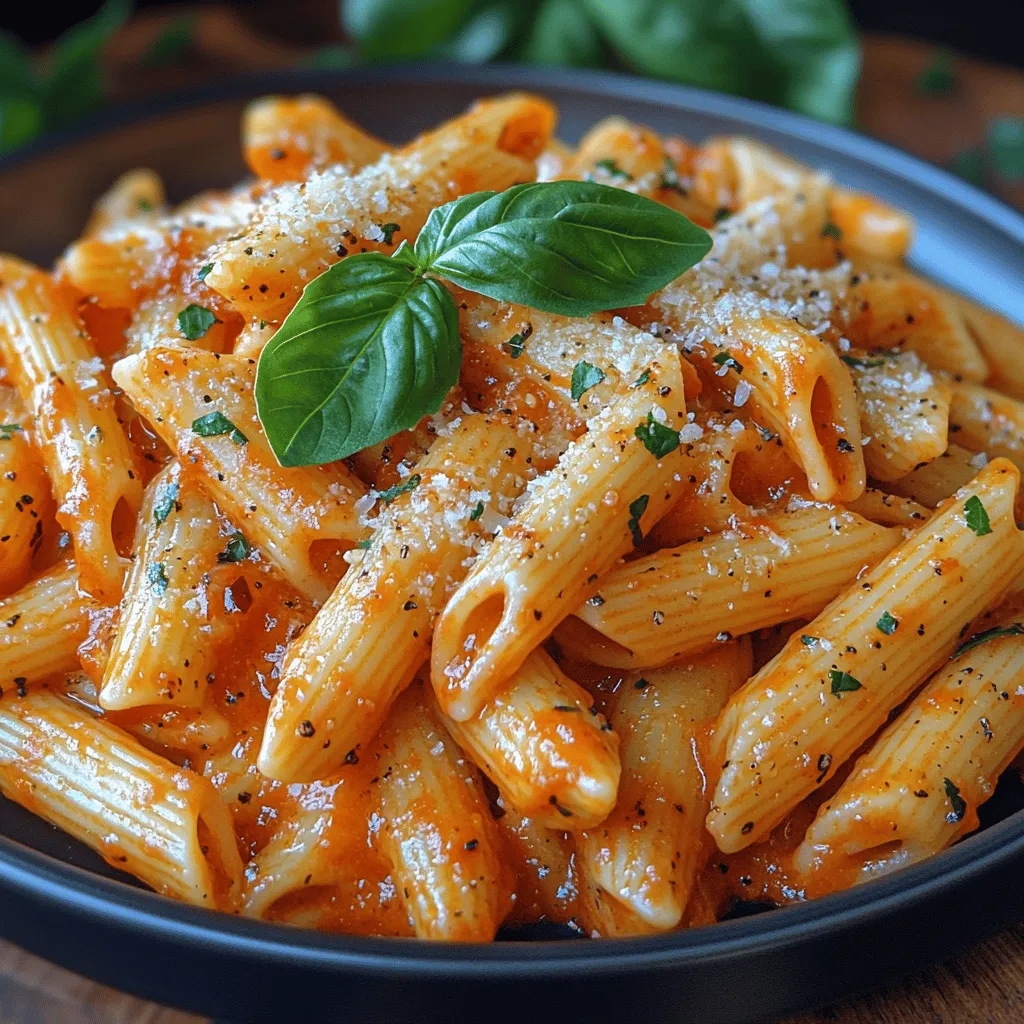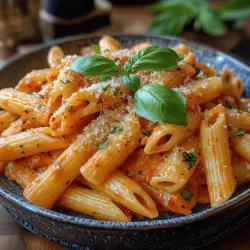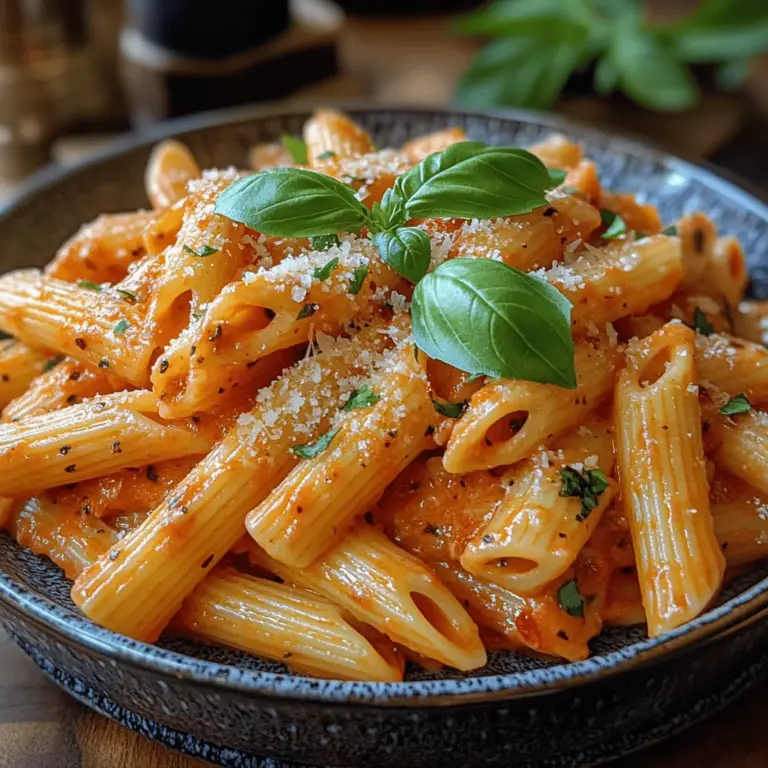Introduction
Roasted chicken is a timeless dish that graces tables across the globe, showcasing its versatility and rich flavors. Whether it’s served at a family gathering, a festive holiday feast, or a casual weeknight dinner, this succulent dish is a staple in many cuisines, celebrated for its comforting nature and ease of preparation. The beauty of a perfectly roasted chicken lies not only in its crispy, golden skin but also in the tender and juicy meat that is infused with vibrant herb flavors.
The appeal of herb-infused flavors cannot be overstated; they elevate the dish, transforming simple ingredients into a culinary masterpiece. Fresh herbs like rosemary, thyme, and sage lend their aromatic qualities to the chicken, creating a symphony of taste that delights the palate. In this guide, we will explore the art of roasting chicken, focusing on the infusion of herbs that enhances its natural flavors and makes it a dish to remember.
Understanding the Ingredients
Fresh Herbs: Types and Their Flavor Profiles
Herbs are the heart of any herb-infused roasted chicken recipe. They not only add depth and complexity to the dish but also contribute a fresh, aromatic quality that brightens the overall flavor. Here are some common herbs that work wonderfully with roasted chicken:
– Rosemary: Known for its robust and pine-like flavor, rosemary pairs beautifully with chicken, providing an earthy undertone that complements the meat’s richness.
– Thyme: This herb has a subtle, slightly minty flavor that blends seamlessly with other herbs. Thyme can enhance the savory notes of the chicken, making it a popular choice in many roasted recipes.
– Sage: With its strong, slightly peppery flavor, sage adds a unique warmth to roasted chicken. It’s especially popular in autumn and winter dishes, evoking a sense of comfort and nostalgia.
– Parsley: Often used as a garnish, parsley also adds a fresh, bright flavor that can help balance the richness of roasted chicken.
Understanding how these herbs interact with chicken is essential for creating a dish that is not only tasty but also aromatic and inviting. When selecting herbs, consider their flavor intensity and how they will complement each other.
The Role of Chicken: Choosing the Right Cut
When it comes to roasting chicken, the cut you choose significantly impacts the final result. Here are some options to consider:
– Whole Chicken: Roasting a whole chicken is a classic approach, allowing for even cooking and maximum flavor. The skin crisps up beautifully while the meat remains juicy.
– Chicken Thighs: Thighs are known for their rich flavor and tenderness, making them an excellent choice for roasting. They have more fat than breasts, resulting in a moist and flavorful dish.
– Chicken Breasts: While breasts are leaner, they can still be roasted successfully. It’s essential to monitor cooking time closely to prevent drying out.
Selecting the right cut of chicken will depend on your personal preference and the number of people you’re serving. Whole chickens are great for family gatherings, while thighs or breasts may be more suitable for smaller meals.
Seasoning Essentials: Salt, Pepper, and Additional Spices
The foundation of flavor in any roasted chicken dish begins with seasoning. Salt and pepper are the most critical components, as they enhance the natural flavors of the chicken and the herbs. Here’s how to use them effectively:
– Salt: Use kosher salt or sea salt for seasoning. Salt not only adds flavor but helps to tenderize the meat, allowing it to retain moisture during cooking. Be sure to season both the outside and inside of the chicken for maximum flavor.
– Pepper: Freshly cracked black pepper adds a subtle heat and complexity to the dish. It’s best to grind pepper just before using it to preserve its flavor.
– Additional Spices: Consider incorporating spices like garlic powder, onion powder, or paprika for an extra layer of flavor. These spices can complement the herbs and enhance the overall taste of the dish.
The proper use of seasoning is crucial for creating a well-balanced and flavorful roasted chicken. Don’t be afraid to experiment with different combinations, finding what works best for your palate.
Optional Add-Ins: Vegetables and Citrus Fruits
Roasting chicken alongside vegetables not only adds color and nutritional value but also creates a delicious side dish that absorbs the flavorful juices of the chicken. Consider the following options:
– Root Vegetables: Carrots, potatoes, and parsnips are excellent choices that caramelize beautifully in the oven, enhancing the sweetness of the dish.
– Alliums: Onions and garlic can add depth of flavor. Roasting them alongside the chicken creates a fragrant base that infuses the meat with rich undertones.
– Citrus Fruits: Lemons, limes, or oranges can be added to the roasting pan to introduce a bright acidity that balances the richness of the chicken. Squeezing fresh citrus over the chicken before serving adds a refreshing finish.
Incorporating these optional add-ins not only elevates the dish but also makes for a complete meal, simplifying the cooking process and reducing cleanup.
Preparing the Chicken
How to Properly Clean and Prepare Chicken
Before you can roast your chicken, it’s essential to properly clean and prepare it. Start by ensuring your workspace and tools are sanitized to prevent cross-contamination. Here’s how to prepare your chicken:
1. Rinse the Chicken: While some chefs recommend rinsing chicken, others advise against it due to the risk of spreading bacteria. If you choose to rinse, do so carefully under cold water and pat dry with paper towels immediately after.
2. Remove Giblets: If your chicken comes with giblets (the heart, liver, and gizzard), be sure to remove them from the cavity. These can be used to make a flavorful stock or gravy later.
3. Trim Excess Fat: Check for any excess fat or skin that may not be desirable. Trim away what you don’t want, but leave enough skin to ensure moisture during cooking.
4. Pat Dry: Use paper towels to pat the chicken dry, as this helps the skin crisp up during roasting. A dry surface allows for better browning and a more appealing texture.
Marinating the Chicken: Why It Matters
Marinating your chicken is a vital step in infusing flavor and ensuring tenderness. A simple herb and oil marinade can make all the difference in the final dish. Here’s why marinating is important:
– Flavor Penetration: Marinating allows the herbs and spices to penetrate the meat, enhancing its taste. It’s best to marinate the chicken for at least one hour, but overnight is ideal for maximum flavor.
– Moisture Retention: The oil in the marinade helps to seal in moisture, preventing the chicken from drying out during cooking. This is especially beneficial for leaner cuts like chicken breasts.
To create a simple herb marinade, combine your chosen herbs with olive oil, salt, pepper, and any additional spices. Coat the chicken thoroughly, ensuring every part is covered, and let it rest in the refrigerator while you prepare the roasting process.
Creating the Herb-Infused Mixture: Ingredients and Method
To achieve that delightful herb-infused flavor, you’ll want to create a mixture that will be rubbed all over the chicken. Here’s a simple method to prepare your herb-infused mixture:
1. Gather Your Ingredients: Choose a combination of fresh herbs (such as rosemary, thyme, and sage), minced garlic, lemon zest, olive oil, salt, and pepper.
2. Chop and Combine: Finely chop the herbs and combine them in a bowl with minced garlic, lemon zest, salt, pepper, and olive oil. The mixture should be thick enough to adhere to the chicken but spreadable.
3. Apply the Mixture: Use your hands or a brush to apply the herb mixture generously to the chicken, making sure to cover all surfaces and even getting some under the skin for maximum flavor infusion.
By taking the time to create a flavorful herb-infused mixture, you set the stage for a roasted chicken that is bursting with flavor and aroma.
Selecting the Right Cooking Method
Overview of Various Roasting Techniques
Roasting chicken can be done using several techniques, each yielding different results. Here are a few popular methods:
– Traditional Roasting: This method involves placing the chicken in a roasting pan and cooking it in the oven. It’s straightforward and produces a beautifully browned chicken.
– Spatchcocking: This technique involves removing the backbone of the chicken, allowing it to lay flat. This method promotes even cooking and reduces roasting time.
– Beer Can Chicken: This fun method involves placing a can of beer (or another liquid) inside the cavity of the chicken, allowing it to steam from the inside out for added moisture and flavor.
Each cooking method has its advantages, so consider your equipment and preferences when deciding how to roast your chicken.
Equipment Needed: Roasting Pan, Thermometer, and More
Having the right equipment is essential for successful chicken roasting. Here are some must-have tools:
– Roasting Pan: A heavy-duty roasting pan is ideal for evenly distributing heat and catching drippings for gravy.
– Meat Thermometer: A reliable meat thermometer is crucial for ensuring your chicken is cooked to the proper internal temperature. The USDA recommends an internal temperature of 165°F (75°C) for poultry.
– Basting Brush: This can be used to apply marinades or drippings during the roasting process, keeping the chicken moist and enhancing flavor.
– Aluminum Foil: Use foil to tent the chicken if it starts to brown too quickly. This helps prevent over-browning while allowing the chicken to finish cooking.
Investing in these tools will help you achieve a perfectly roasted chicken, ensuring both flavor and safety.
Tips on Oven Temperature: Low and Slow vs. High Heat
The temperature at which you roast your chicken can significantly affect its outcome. Here are two common methods:
– Low and Slow: Roasting at a lower temperature (around 325°F/163°C) allows the chicken to cook evenly and retain moisture. This method is ideal for whole chickens, as it results in tender meat and a crispy skin.
– High Heat: Roasting at a higher temperature (around 425°F/218°C) can produce a beautifully browned exterior quickly. However, this method requires careful monitoring to prevent drying out the meat.
Choosing the right temperature will depend on your desired outcome and the specific cut of chicken you are using. Adjusting the cooking time accordingly will help you achieve the perfect roast.
Step-by-Step Roasting Process
Preheating Your Oven: Importance of Temperature Control
Before you start roasting, preheating your oven is crucial. This step ensures that the chicken cooks evenly and achieves that desired crispy skin. Set your oven to your chosen temperature (either low and slow or high heat) and allow it to heat fully before placing the chicken inside. This practice is essential for consistent cooking and optimal flavor development.
Arranging the Chicken and Veggies in the Roasting Pan
When it’s time to roast, it’s important to arrange your chicken and any accompanying vegetables properly in the roasting pan. Here’s how to do it:
1. Place the Chicken: If you’re roasting a whole chicken, position it breast-side up in the center of the roasting pan. If using chicken pieces, arrange them in a single layer without crowding.
2. Add Vegetables: Surround the chicken with your chosen vegetables, ensuring they are evenly distributed. This allows the vegetables to cook in the flavorful drippings from the chicken, enhancing their taste.
3. Drizzle with Oil: If desired, drizzle a little olive oil over the vegetables and season them with salt and pepper. This helps them caramelize beautifully during roasting.
Following these steps will set you up for a successful roasting experience, leading to a flavorful and visually appealing dish that is sure to impress your family and friends. As you embark on this savory journey, embracing the art of herb-infused roasted chicken will elevate your culinary skills and create memorable meals for years to come.

Roasting Time: How to Determine Doneness
Roasting chicken to perfection is an art that involves knowing when it’s truly done. The ideal internal temperature for roasted chicken is 165°F (75°C). To ensure accuracy, use a meat thermometer inserted into the thickest part of the thigh without touching the bone. This method guarantees that you’re checking the temperature of the meat rather than the bone, which can yield inaccurate readings.
Another reliable indicator of doneness is the juices. When you pierce the chicken, clear juices should run out. If the juices are pink, the chicken needs more time in the oven. Additionally, observe the color of the skin: it should be golden brown and crispy, indicating it has reached the desired doneness.
Basting: Techniques for Keeping the Chicken Moist
Basting is a technique that can significantly enhance the moisture and flavor of your roasted chicken. By periodically spooning the pan juices over the chicken during roasting, you help keep the meat from drying out and enhance its flavor profile. Here are some effective basting techniques:
1. Use a Flavorful Base: Start with a mixture of melted butter or olive oil combined with herbs and spices. As you baste, this mixture will add layers of flavor while keeping the chicken juicy.
2. Baste Frequently: Aim to baste every 20-30 minutes. This frequent application helps to build a rich, flavorful crust and ensures the meat stays moist.
3. Add Broth or Wine: For an extra layer of flavor, consider adding a splash of chicken broth or white wine to the bottom of your roasting pan. This not only creates a flavorful steam but also adds moisture to the cooking environment.
Flavor Enhancements
Adding Aromatics: Garlic, Onions, and Citrus
Aromatics are key to elevating the flavor of your roasted chicken. Adding garlic, onions, and citrus can enhance the dish significantly:
– Garlic and Onions: Slicing garlic and onions and placing them inside the cavity of the chicken or around it in the roasting pan will impart a delicious depth of flavor as they cook. They caramelize beautifully and create a lovely aroma that permeates the chicken.
– Citrus: Lemons, limes, and oranges are excellent additions. Their acidity not only pairs beautifully with chicken but also helps to tenderize the meat. Squeeze some juice over the chicken and toss the spent halves into the cavity for an aromatic boost.
Utilizing the Benefits of Butter or Oil for a Crispy Skin
Crispy skin is a hallmark of perfectly roasted chicken. To achieve this, a generous coating of butter or oil is essential. Here are a few tips:
– Butter: Rub softened butter under the skin of the chicken before roasting. This not only adds moisture but also helps in achieving that coveted crispy skin.
– Oil: A light drizzle of olive oil over the skin before roasting creates a barrier that helps crisp the skin while locking in moisture. Season it generously with salt and pepper to enhance the flavor.
Infusing Additional Flavors: Wine or Broth Additions
Incorporating liquids such as wine or broth into your roasting process can create a flavor-rich environment for your chicken. Here’s how:
– Wine: A splash of white wine in the roasting pan can add complexity to the dish. As it evaporates, it infuses the chicken with flavor and keeps the environment moist.
– Broth: Pouring chicken broth into the bottom of the pan can yield a delicious sauce that you can serve alongside the chicken or use as a base for gravies.
Serving Suggestions
Ideal Side Dishes That Complement Roasted Chicken
When it comes to serving roasted chicken, the sides can elevate the meal to new heights. Here are some perfect accompaniments:
– Roasted Vegetables: Seasonal vegetables such as carrots, Brussels sprouts, and potatoes can be roasted alongside the chicken, absorbing the flavors and juices for a cohesive meal.
– Garlic Mashed Potatoes: Creamy and buttery, garlic mashed potatoes pair beautifully with roasted chicken, providing a comforting and hearty side.
– Rice Pilaf: A savory rice pilaf, seasoned with herbs and spices, can be a delightful complement, soaking up the flavors from the chicken.
Presentation Tips: Plating the Chicken for Visual Appeal
Presentation is key in making any dish appetizing. Here are some tips for plating your roasted chicken:
1. Rest the Chicken: Allow the chicken to rest for at least 10-15 minutes after roasting. This helps redistribute the juices, making for a juicier presentation.
2. Carve with Care: Carve the chicken into attractive pieces—thighs, drumsticks, and breast halves—and arrange them artfully on a large platter.
3. Garnish: Fresh herbs, like rosemary or parsley, can be sprinkled over the top for a pop of color. Adding lemon wedges or roasted garlic can also enhance the visual appeal.
Suggested Wines or Beverages to Pair with the Meal
Choosing the right beverage can elevate your dining experience. Here are a few suggestions:
– White Wine: A crisp Sauvignon Blanc or a buttery Chardonnay complements the herbaceous notes of roasted chicken beautifully.
– Red Wine: If you prefer red, a light Pinot Noir or a Grenache can provide a nice balance to the dish without overpowering the flavors.
– Non-Alcoholic Options: For a non-alcoholic option, sparkling water with a squeeze of lemon or a refreshing iced tea can be delightful.
Storing and Reheating Leftovers
Best Practices for Storing Roasted Chicken
To maximize the freshness and flavor of your leftover roasted chicken, proper storage is essential. Here’s how to do it right:
– Cool Before Storing: Allow the chicken to cool to room temperature before storing it in the refrigerator. This prevents condensation from creating a soggy environment.
– Use Airtight Containers: Place leftover chicken in airtight containers to minimize exposure to air and prevent spoilage. Alternatively, wrap it tightly in aluminum foil or plastic wrap.
– Label and Date: If you plan on keeping it for more than a couple of days, label and date the container to keep track of freshness.
Methods for Reheating Without Drying Out
Reheating chicken can sometimes lead to dryness, but there are effective methods to ensure it retains its moisture:
– Oven Reheating: Preheat the oven to 350°F (175°C). Place the chicken on a baking sheet, add a splash of broth to the pan, cover with foil, and heat for about 20 minutes or until warmed through.
– Microwave Reheating: For quick reheating, use the microwave. Place the chicken on a microwave-safe plate, add a few drops of water, cover with a microwave-safe lid, and heat in short intervals to avoid overcooking.
Creative Ideas for Repurposing Leftovers in Other Dishes
Leftover roasted chicken is incredibly versatile. Here are some creative ways to use it:
– Chicken Salad: Shred the chicken and mix it with mayonnaise, celery, grapes, and almonds for a delicious chicken salad that can be served on sandwiches or atop greens.
– Chicken Tacos: Use the leftover chicken in tacos with fresh toppings like avocado, salsa, and cabbage for a quick and satisfying meal.
– Soups or Stews: Add shredded chicken to soups or stews for added protein and flavor. A hearty chicken noodle soup or a chicken and vegetable stew can make for a comforting dish.
Nutritional Information
Breakdown of Calories and Macros Per Serving
Understanding the nutritional content of your food can help with meal planning and dietary choices. Here’s a general breakdown of a serving of roasted chicken (approximately 3.5 ounces):
– Calories: 165
– Protein: 31g
– Fat: 3.6g
– Carbohydrates: 0g
This simple yet nutritious dish provides a great source of protein while being low in carbs, making it an excellent choice for various dietary preferences.
Health Benefits of Roasted Chicken and Herbs
Roasted chicken is not only delicious but also offers numerous health benefits:
– High Protein Content: Essential for muscle building and repair, protein is vital for overall health.
– Rich in Nutrients: Incorporating fresh herbs not only enhances flavor but also adds antioxidants and vitamins to your meal.
– Low in Carbohydrates: This dish is naturally low in carbs, making it suitable for low-carb or ketogenic diets.
Dietary Considerations and Alternatives
For those with dietary restrictions or preferences, roasted chicken can easily be adapted. Consider these alternatives:
– Gluten-Free: This recipe is naturally gluten-free; just ensure any accompanying sauces or sides are also gluten-free.
– Dairy-Free: Swap butter for a dairy-free alternative like olive oil or a plant-based butter substitute to cater to dairy-sensitive individuals.
– Vegetarian Option: For a vegetarian twist, consider using roasted cauliflower or a plant-based protein as the main dish, seasoned similarly to the chicken for a similar flavor profile.
Conclusion
Making herb-infused roasted chicken is not just about cooking; it’s about crafting a meal that brings joy and comfort. The process of roasting, with its aromatic herbs and rich flavors, creates an inviting dish that can easily become a family favorite.
This recipe offers versatility, allowing you to experiment with flavors, textures, and sides that suit your personal taste. Whether you are serving it for a special occasion or a casual weeknight dinner, roasted chicken never fails to impress.
I encourage you to try this recipe and make it your own. With the tips and techniques provided, you can create a dish that resonates with your culinary style. Enjoy the journey of cooking and the delight of sharing this comforting meal with friends and family!


